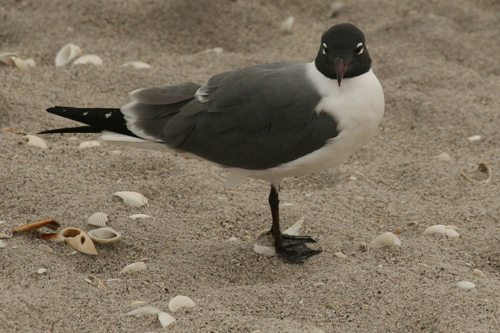In my years as an image keywording specialist, I keyworded nearly 250,000 images (yep a quarter of a million). To keyword all these images, consistently and comprehensively, I had to have a system to methodically go through each image. Without a system, there simply is no way to ensure consistency and accuracy.
Image recognition software still has a long way to go before it can come even close to manual Keywording, so you need to learn how to do it well. In a series of six weekly posts, I will show you a way to systematize how you look at an image to come up with all the appropriate keywords.
The first step is to start dividing your image. Actually, what we are doing is parsing out the language you are using to describe the image, into manageable parts. There are many useful and logical ways to make these divisions, but this is my preferred method.
I first divided up my potential keywords into six buckets:
- WHO: Describe the people in the image
- WHAT: Describe the objects in the image
- WHERE: Describe where the image was taken
- WHEN: Describe when the image was taken
- WHY: Describe the actions, emotions, concepts and adjectives shown in the image
- HOW: Describe any and all photographic techniques used in taking the photo
I know, it’s not perfect, but it has a certain ring to it, and it works. I guarantee you that if you did nothing more than just use this punch list as you were keywording, you’d be doing a better job than most photographers. However, I still highly recommend reading the following posts as I will drill down into each group and explain both what to look for, what to keyword, and teach you some of the industry standard keywords to help you connect with buyers.
But, before I go into detail on each of these groups, I’m going to reiterate a theme that surfaces in all my blogs, tweets and any advice I give to photographers. KEYWORDS are how you sell your images. Every accurate keyword you add to an image increases the chances it will be found in a search by a buyer, and every time it’s found in a search is a chance for it to sell. There are no shortcuts to an excellent set of keywords. Time and effort is required, but with a good system you should be able to keep the time to a minimum.

Let’s use this image of a seagull as an example. I’d venture that the average photographer would come up with the following keywords: seagull, wildlife, beach, and then start running out of ideas.
Here’s the list of keywords I would come up with: seagull, bird, animal, wildlife, beach, sand, outdoors, outside, close up, close-up, closeup, shallow depth of field, one animal, one, Sarasota, Florida and FL. For some stock agencies, I would also include the plurals seagulls, birds, and animals, as stock houses have different search engine capabilities and you need to send all the keywords that will get your images found in more searches.
For any photographer who thinks the first list is plenty and it’s not worth their time to come up with all the extra keywords, I have this answer: You don’t know what the buyer will search for. Maybe their first search is for seagull, but that results in lots of studio shots of seagulls flying, and they know they want a shot of a seagull standing on the beach. So they modify their search to seagull + beach, or seagull + sand. This is how buyers find images, they search multiple terms trying to find just the right image.
What if they didn’t care if it was a seagull or a sandpiper, and searched for bird + beach or just wanted a picture of a single animal on the beach and searched for one animal + beach?
Admittedly, closeup and shallow depth of field won’t get you many sales by themselves, but if someone searches for seagull + closeup + shallow depth of field, you have a very good shot at selling this image.
You get the drift, and now that you appreciate that more good keywords is essential to your success as a stock photographer.
One more note, keywording is as much art as it is science, and I would love to hear your comments and suggestions. I consider this guide to be a work in progress more than the definitive cyclopedia of image keywording.
–
![]()
 I’ve been working as a keywording specialist for years, keywording images for publishers and photographers. From this experience, I have developed KeywordSmart, a web-based image keywording tool.
I’ve been working as a keywording specialist for years, keywording images for publishers and photographers. From this experience, I have developed KeywordSmart, a web-based image keywording tool.
In KeywordSmart we have created the easiest and quickest process to guide our photographers through every aspect of the image, while supplying synonyms, variant spellings, as well as teaching our users the industry standard keywords and phrases.

Company: KeywordSmart
Phone: 914-388-5202
Email: jodyapap@keywordsmart.com
Website: http://KeywordSmart.com
Twitter: @KeywordSmart
Facebook: http://facebook.com/KeywordSmart
Image Keywording Tip of the Day
© 2011 Jody Apap
Here’s how you can share your tips, techniques and tutorials on CurrentPhotographer.com
–
*The Current Photographer website contains links to our affiliate partners. Purchasing products and services through these links helps support our efforts to bring you the quality information you love and there’s no additional cost to you.
Great article. Waiting more… I **LOVE** tag my pict. I think it’s ver usefull.